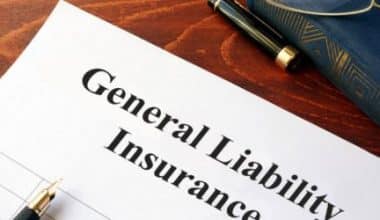Every year, approximately one in every twenty insured homes in the United States receives a claim. While the structure of your actual home is usually covered at replacement cost under your dwelling coverage (up to certain limits), your other belongings aren’t always covered. Most home insurance policies, by default, reimburse losses for belongings based on the actual cash value (ACV), which is the value of the stolen or damaged property less depreciation. However, that is not your only option. Some policyholders prefer a replacement cost feature known as replacement cost value (RCV). Both types of coverage have advantages and disadvantages, so it is important to weigh both options when selecting a policy. In this article, we will discuss actual cash value insurance policy, how they are calculated, and how they differ from replacement costs.
What is Actual Cash Value Insurance
Actual cash value insurance (ACV) is the amount equal to the replacement cost minus depreciation of a damaged or stolen property at the time of the loss. The actual value of the property that could be sold is always less than the cost of replacing it.
How Actual Cash Value Works
Insurance companies will sometimes use the actual cash value policy to determine how much money will be paid to a policyholder after loss or damage to the insured property or vehicle. There is no such thing as Actual Cash Value insurance, for example; this is a common misconception.
For example, if an automobile is totaled in an accident, the insurance company will typically pay the vehicle’s actual cash value after calculating its replacement cost and deducting factors such as depreciation and wear and tear. The insurer would pay the amount required to replace the covered item with a like-kind new one under replacement-cost coverage.
In the property and casualty insurance industry, the actual cash value is used to value insured property. Actual cash value is calculated by subtracting depreciation from replacement cost, whereas depreciation is calculated by determining an item’s expected lifetime and determining what percentage of that life remains. The actual cash value is calculated by multiplying this percentage by the replacement cost.
Recoverable Depreciation vs. Actual Cash Value
The difference between replacement cost and actual cash value is referred to as recoverable depreciation. A property depreciates and loses value over time. Replacement cost coverage includes recoverable depreciation. This allows you to deduct the value of the damaged or destroyed property. It is not usually included in an actual cash value insurance policy.
Assume you spend $1,000 on tools to run your business. Three years later, your tools are stolen from the building where your company is located. The actual cash value of the tools is determined by your insurer to be $400. You’ll receive a claim check for $400 less the deductible if you have an actual cash value insurance policy. You may be able to claim the $600 in depreciation if you have RCV coverage.
How Do Insurance Companies Determine Actual Cash Value?
Actual cash value insurance is calculated by calculating the cost of replacing a specific object and subtracting depreciation. Insurance companies assign a lifetime to an object and calculate depreciation based on the percentage of its life remaining. The actual cash value of an item is calculated by multiplying this percentage by the replacement cost.
When you file a claim with your insurance company, an insurance adjuster will be assigned to determine the cost of your claim. If you have agreed to value your covered items at their actual cash value, the adjuster will calculate how much it would currently cost to replace your lost or damaged item with a similar item, and then deduct the loss in value due to depreciation from that amount.
Replacement Cost vs. Actual Cash Value
The distinction between actual cash value and replacement cost is straightforward. While ACV is determined by the depreciated value of your lost, stolen, or damaged goods, replacement cost is determined by the cost of replacing your damaged item with a brand-new model. If you have a replacement cost policy, the check you receive will be greater than the check you would receive if you had an ACV policy, but you will pay a higher premium.
How Do I Choose Between an Actual Cash Value and a Replacement Cost Insurance Policy?
If you’re on a tight budget, an actual cash value homeowner’s insurance policy is a better option than a replacement cost homeowner’s insurance policy because your premium will be lower. If you don’t have many valuable items to insure, ACV may suffice. Again, if your home is not paid off or is financed, your dwelling coverage will most likely include replacement cost coverage up to your policy limits. However, if it is appropriate for your situation, you could choose actual cash value coverage.
If you have a lot of older items, live in a high-risk area, or have a lot of belongings to insure, replacement cost policies may be a good idea. Replacement cost coverage has a higher premium, but it means you’ll pay less out of pocket when it comes time to replace anything damaged or stolen as a result of a covered loss.
Example Of Actual Cash Value Insurance Policy In A Claim
Sandra paid $500 for her couch at a local furniture store eight years ago. She’s getting ready to move and hopes to sell the couch at a garage sale. She’d love to get $500 back for it, but she knows that’s not going to happen.
A couch may be worth $500 brand new, but you’d never expect to pay that much for the same couch after 8 years of use. Sandra’s actual profit from selling the couch is comparable to its cash value.
How Do You Determine the Actual Cash Value of an Insurance Policy?
Rather than calculating the actual cash value of an insurance policy haphazardly, as one might at a garage sale, insurers use depreciation. Depreciation is an accounting technique that spreads an item’s value over its expected lifetime.
That is, if Sandra wanted to depreciate the value of her couch, she would first determine its life expectancy. Assume she decides that a couch has a reasonable life expectancy of 10 years.
Sandra’s couch is 8 years old, which means it has lived through 8/10 of its expected life or 80%; it has depreciated by 80%. The couch is now only 20% of the way through its life. Sandra multiplies the original value of the couch by the percentage of its remaining life to calculate the actual cash value insurance policy:
- $500 x 20% = $100
Sandra could thus ask for $100 for her couch at the garage sale based on her depreciation calculation. That is her estimate of the actual cash value. It’s a streamlined version of how insurance companies compute actual cash value.
How Does ACV Work in the Insurance Industry?
Insurance companies policies add one more step to the process of calculating the actual cash value. Insurance companies do not base their calculations on the original purchase price of an item; instead, they use the replacement cost.
Replacement cost is the cost to replace an item with a similar one (or to repair it, whichever costs less). That may appear to be a minor distinction, but it is critical.
Example
Sandra needs to buy a new couch after selling her old one at a garage sale and moving. She liked her old couch, so she goes to the furniture store to look for a replacement. She is astounded to learn that comparable couches are now worth $700!
Sandra’s couch replacement cost is $700 in this case, even though she only paid $500 for it originally. Insurers commit to replacing lost or damaged items with new ones when a property is insured for its replacement cost. They do not expect people to travel back in time to purchase new items at historical prices. They also do not expect people to replace damaged items with inferior replacements. This is what “replacement cost” means.
As a result, if an insurer was calculating the actual cash value of Sandra’s old couch, they’d approach it a little differently than she did. They’d start by calculating how much a new, comparable couch would cost Sandra: $700. Then they’d figure out how long that couch is expected to last.
When determining the useful lives of various types of property, insurers use standards. The insurer agrees with Sandra in this case: a couch should last 10 years. With those figures in mind, here’s how the insurer would calculate Sandra’s old couch:
- $700 x 20% = $140
(replacement cost) x (percentage of expected life remaining) = (actual cash value)
Sandra’s couch’s actual cash value is determined to be $140 by the insurer. If Sandra’s couch had been destroyed in a fire before she could sell it, her insurer would have paid her $140 in actual cash value. Sandra’s $100 valuation and the insurer’s $140 valuation differed only in terms of original value vs. replacement cost. As you can see, replacement cost is an important insurance concept.
What is an example of actual cash value?
Actual Cash Value Example
A comparable television today costs $3,500. The destroyed television was only 50% (five years) old. The actual cash value is $1,750, which is equal to $3,500 (replacement cost) multiplied by 50% (useful life remaining).
Which is better ACV or RCV?
If you have Replacement Cost Value (RCV) coverage, your policy will pay the cost of repairing or replacing your damaged property without taking depreciation into account. Your policy will pay the depreciated cost to repair or replace your damaged property if you have Actual Cash Value (ACV) coverage.
What is the difference between actual cash value and replacement cost in insurance?
The distinction is that replacement cost insurance covers the entire replacement cost of your items, whereas actual cash value insurance only covers the depreciated value. You’ll have enough money to replace your belongings if you have replacement cost insurance.
What is the formula for actual cash value?
The actual cash value is equal to the replacement cost minus any depreciation (ACV = replacement cost – depreciation). It represents the monetary value you could expect to receive if you sold the item on the market.
Do insurance companies pay replacement value?
If your personal belongings are stolen, damaged, or destroyed as a result of a covered loss and your policy includes RCV coverage, your insurer will reimburse you for the full cost of replacing the items at their current value.
Can you negotiate total loss value?
When they total your car. The total loss negotiation procedure is simple. A vehicle is legally considered a total loss if the cost of repairs and supplemental claims equals or exceeds 75% of the fair market value—again, typically negotiable.
Is actual cash value the same as fair market value?
The terms “market value” and “actual cash value” have different meanings. Appraisers use fair market value to determine the price of a piece of property. Actual cash value is a type of insurance standard that determines how much your insurer will pay you if your house or car is damaged.
What value does insurance use to total a car?
The insurer will decide whether to declare your vehicle a total loss based on the actual cash value of your car immediately before the damage. You can estimate the fair market value of your car using tools like Kelley Blue Book or by looking at what similar cars are selling for in your area.
In Essence
Insurance companies use actual cash value policies to determine how much to pay a policyholder after a loss or damage. I hope you find this piece informative.
Actual Cash Value Insurance FAQs
Is cash value the same as market value?
In contrast, when reimbursing policyholders for losses, insurance companies arguably prefer actual cash value (ACV), also known as market value. Actual cash value equals replacement cost minus depreciation (ACV = replacement cost – depreciation).
What do insurance adjusters use to determine car value?
Your auto insurance company will look at your vehicle’s mileage, age, signs of wear and tear, and accident history to determine its ACV. Your ACV is the vehicle’s replacement cost less the deductible for collision or comprehensive insurance.
How does State Farm determine actual cash value?
We calculate the value of your vehicle based on its year, make, model, mileage, overall condition, and major options—minus your deductible and any applicable state taxes and fees. We will pay the owner, the lienholder, or both.






